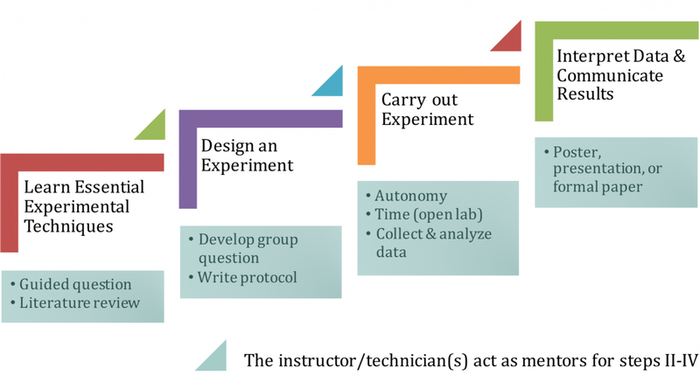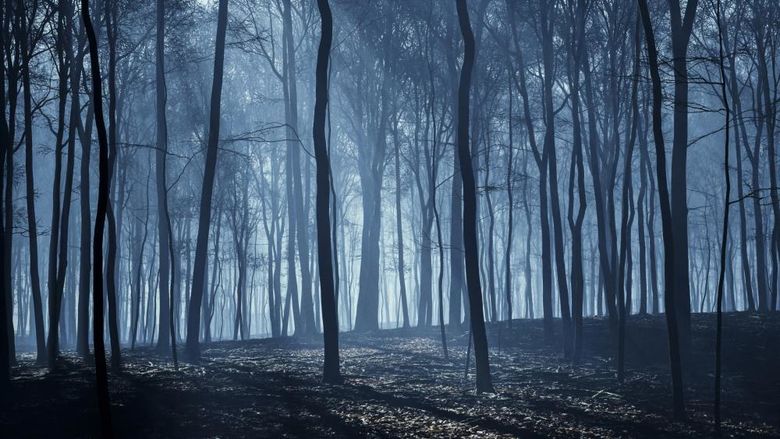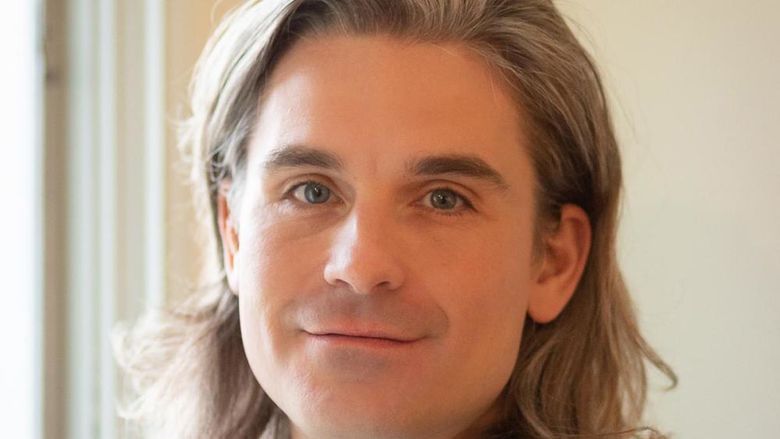By Jacqueline McLaughlin
Course-based undergraduate research experiences (CUREs), by definition, are learning experiences in which whole classes of students address a research question or problem with unknown outcomes or solutions that are of interest to external stakeholders (Dolan 2016). They were devised to address a major goal of national reform efforts in life science education to expand research involving undergraduate students (American Association for the Advancement of Science [AAAS] 2011; National Research Council 2003).
Numerous studies have shown the benefits of CUREs to students: enhanced self-confidence in scientific thinking and the development of scientific process skills (Szteinberg and Weaver 2013; Brownell et al. 2015), increased inclusivity in science for unrepresented populations (Bangera and Brownell 2014), and improved persistence in science and medicine (Hanauer et al. 2012). CUREs also benefit faculty with several studies demonstrating closer integration of teaching and research, positive influence on promotion and tenure, publication of research in both science and education journals, and greater impact of research programs. Additionally, faculty benefited by identifying, recruiting, and training students to join their research labs, and by enhanced fulfillment in teaching itself (Fukami 2013; Kowalski, Hoops, and Johnson 2016; Shortlidge, Bangera, and Brownell 2016).
To date, CUREs have primarily been utilized in undergraduate laboratory courses. There is now a growing consensus about what constitutes a CURE in the natural sciences (e.g., biology, chemistry, physics, math, earth, and planetary science) laboratory. Such CUREs have five defining characteristics: 1) There is an element of discovery, so that students are working with novel data. 2) Iteration is built into the lab. 3) Students engage in a high level of collaboration. 4) Students learn scientific practices. 5) The topic is broadly relevant so that it could potentially be published and/or of interest to a group outside the class (Auchincloss et al. 2014).
While there is much diversity in the research laboratory topics explored in CUREs, two distinct CURE models have emerged, both revealing student and faculty benefits: (1) a local model where faculty members develop and teach a CURE stemming from their own research interests (e.g. Brownell et al. 2012; Ward et al. 2014) and (2) a national model where a CURE is developed by an individual faculty member and then is expanded and taught by a network of faculty (e.g., Lopatto et al. 2008; Jordan et al. 2014).
A great way to develop a local CURE is for faculty, instructors, and/or advanced graduate students to identify a way to scale up their own research interests and embed this into a lab course. A proven framework that orients and guides an instructor through the process of designing and implementing a CURE that possesses the above listed five elements is presented in Figure 1 and example transformations using this model in Table 1. Per this framework, students work in small groups to learn research techniques; ask novel questions grounded in the scientific literature; design their own experiments; test their hypotheses using the scientific method and the reflective process of progressive problem solving; interpret their data; and disseminate their work in a professional scientific manner by means of poster presentations, oral academic talks, or scientific papers. To achieve this, students receive individualized mentorship which is essential to knowledge integration (Linn et al. 2015).
| Level | Lab | Topic | Location | Reference |
|---|---|---|---|---|
| Freshmen Sophomore | Introductory Cell Biology for Majors | Growth Kinetics of Yeast | 4-year college | Goudsouzian, McLaughlin, and Slee 2017 |
| Freshmen Sophomore | Introductory Cell Biology for Majors | Cancer Cell Transformation | 4-year college | McLaughlin and Coyle 2016 |
| Honors | Introductory biology for nonmajors | Microalgae as a Source of Biofuel | 2-year college | Goedhart and McLaughlin 2016 |
| Sophomore | Developmental biology for majors | Drug Induced Arrthymias in the Developing Vertebrate Heart | 4-year college | McLaughlin and Patel 2017 |
Faculty looking to carry out pedagogical research on the effectiveness of a local CURE that they develop and implement should work to fill the present gaps Faculty looking to carry out pedagogical research on the effectiveness of a local CURE that they develop and implement should work to fill the present gaps in the literature. To date, there are few studies that make use of valid and reliable measures of student outcomes (beyond Student Assessment of their Learning Gains (SALG) surveys) or that include study designs and methods that control for student-level differences. Additional research is needed that makes use of theory and methods from the social sciences to more fully understand how CUREs operate; how students and faculty benefit from this unique learning environment; and how challenges to adopting, implementing, and sustaining CUREs can be overcome (Dolan 2016).
References
American Association for the Advancement of Science (AAAS). 2011. Vision and Change in Undergraduate Biology Education: A Call to Action. Washington, DC: Accessed May 1, 2020. https://live-visionandchange.pantheonsite.io/wp-content/uploads/2013/11/...
Auchincloss, Lisa Corwin, Sandra L. Laursen, Janet L. Branchaw, Kevin Eagan, Mark Graham, David I. Hanauer, Gwendolyn Lawrie, et al. 2014. “Assessment of Course-Based Undergraduate Research Experiences: A Meeting Report.” CBE—Life Sciences Education 13 (1): 29–40. https://doi.org/10.1187/cbe.14-01-0004
Bangera, Gita, and Sara E. Brownell. 2014. “Course-Based Undergraduate Research Experiences Can Make Scientific Research More Inclusive.” Edited by Graham Hatfull. CBE—Life Sciences Education 13(4): 602–6. https://doi.org/10.1187/cbe.14-06-0099
Brownell, Sara E., Daria S. Hekmat-Scafe, Veena Singla, Patricia Chandler Seawell, Jamie F. Conklin Imam, Sarah L. Eddy, Tim Stearns, and Martha S. Cyert. 2015. “A High-Enrollment Course-Based Undergraduate Research Experience Improves Student Conceptions of Scientific Thinking and Ability to Interpret Data.” CBE–Life Sciences Education 14(2):ar21. doi: 10.1187/cbe.14-05-0092
Brownell, Sara E., Matthew J. Kloser, Tadishi Fukami, and Rich Shavelson. 2012. “Undergraduate Biology Lab Courses: Comparing the Impact of Traditionally-based ‘Cookbook’ and Authentic Research-Based Courses on Student Lab Experiences.” Journal of College Science Teaching 41(4):36-45. https://www.questia.com/library/journal/1G1-294897794/undergraduate-biol...
Dolan, Erin L. 2016. Course-Based Undergraduate Research Experiences: Current Knowledge and Future Directions. Commissioned for Committee on Strengthening Research Experiences for Undergraduate STEM Students. http://sites.nationalacademies.org/cs/groups/dbassesite/documents/webpag...
Fukami, Tadashi. 2013. “Integrating Inquiry-Based Teaching with Faculty Research.” Science 339(6127): 1536–37. https://doi.org/10.1126/science.1229850
Goedhart, Christine M., and Jacqueline S. McLaughlin. 2016. “Student Scientists: Transforming the Undergraduate Biology Lab into a Research Experience.” The American Biology Teacher 78(6): 502–8. https://doi.org/10.1525/abt.2016.78.6.502
Goudsouzian, Lara K., Jacqueline S. McLaughlin, and Joshua B. Slee. 2017. “Using Yeast to Make Scientists: A Six-Week Student-Driven Research Project for the Cell Biology Laboratory.” CourseSource 4. https://doi.org/10.24918/cs.2017.4
Hanauer, David I., Jennifer Frederick, Brian Fotinakes, and Scott A. Strobel. 2012. “Linguistic Analysis of Project Ownership for Undergraduate Research Experiences.” Edited by Hannah Sevian. CBE—Life Sciences Education 11(4): 378–85. https://doi.org/10.1187/cbe.12-04-0043
Jordan, Tuajuanda C., Sandra H. Burnett, Susan Carson, Steven M. Caruso, Kari Clase, Randall J. DeJong, John J. Denneh, et al. 2014. “A Broadly Implementable Research Course in Phage Discovery and Genomics for First-Year Undergraduate Students.” MBio 5(1): e01051-01013. DOI: 10.1128/mBio.01051-13
Kowalski, Jennifer R., Geoffrey C. Hoops, and R. Jeremy Johnson. 2016. “Implementation of a Collaborative Series of Classroom-Based Undergraduate Research Experiences Spanning Chemical Biology, Biochemistry, and Neurobiology.” CBE—Life Sciences Education 15(4): ar55. https://doi.org/10.1187/cbe.16-02-0089
Linn, Marcia C., Erin Palmer, Anne Baranger, Elizabeth Gerald, and Elisa Stone. 2015. "Undergraduate Research Experiences: Impacts and Opportunities." Science 347, 1261757. https://science-sciencemag-org.ezaccess.libraries.psu.edu/lookup/doi/10....
Lopatto, D., C. Alvarez, D. Barnard, C. Chandrasekaran, H-M. Chung, C. Du, T. Eckdahl, et al. 2008. “Undergraduate Research: Genomics Education Partnership.” Science 322 (5902):684-685. doi: 10.1126/science.1165351
McLaughlin, Jacqueline S., and Melissa S. Coyle. 2016. “Increasing Authenticity & Inquiry in the Cell & Molecular Biology Laboratory.” The American Biology Teacher 78(6): 492–500. https://doi.org/10.1525/abt.2016.78.6.492
McLaughlin, Jacqueline S., David E. Favre, Suzanne E. Weinstein, and Christine M. Goedhart. 2017. “The Impact of a Four-Step Laboratory Pedagogical Framework on Biology Students’ Perceptions of Laboratory Skills, Knowledge, and Interest in Research.” Journal of College Science Teaching 47(1): 83–91.
Mclaughlin, Jacqueline S., Mit Patel, and Joshua B. Slee. 2020. “A CURE Using Cell Culture-Based Research Enhances Career Ready Skills in Undergraduates in Preparation to Enter the American Workforce.” Scholarship and Practice of Undergraduate Research (Spur) (under review).
McLaughlin, Jacqueline S., and Mit Patel. 2017. "An authentic research experience for undergraduates in the developmental biology and physiology laboratory using the chick embryonic heart." The American Biology Teacher 79(8): 645-653. https://doi.org/10.1525/abt.2017.79.8.645
National Research Council. 2003. BIO 2010: Transforming Undergraduate Education for Future Research Biologists. National Academies Press. https://doi.org/10.17226/10497
Shortlidge, Erin E., Gita Bangera, and Sara E. Brownell. 2016. “Faculty Perspectives on Developing and Teaching Course-Based Undergraduate Research Experiences.” BioScience 66(1): 54–62. https://doi.org/10.1093/biosci/biv167
Szteinberg, Gabriela A., and Gabriela C. Weaver. 2013. “Participants’ Reflections Two and Three Years after an Introductory Chemistry Course-Embedded Research Experience.” Chemistry Education Research and Practice 14(1): 23–35. https://doi.org/10.1039/C2RP20115A
Ward, Jennifer Ward, H.David Clarke, and Jonathan L. Horton. 2014. “Effects of a Research-Infused Botanical Curriculum on Undergraduates’ Content Knowledge, STEM Competencies, and Attitudes toward Plant Sciences.” CBE-Life Sciences Education 13(3): 387-396. doi:10.1187/cbe.13-12-0231



